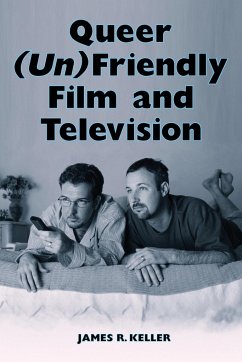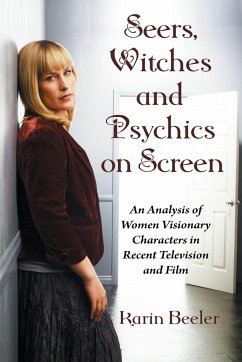
Performing Queer Female Identity on Screen
A Critical Analysis of Five Recent Films
Versandkostenfrei!
Versandfertig in 1-2 Wochen
44,99 €
inkl. MwSt.

PAYBACK Punkte
22 °P sammeln!
Film audiences have grown used to seeing female characters in ""performance roles,"" singing or dancing on stages in nightclubs, musical arenas, or theaters--performing their ""femaleness"" for the fictional audience as well as the film viewing audience. But queer women in film perform on yet another level. In addition to performing their gender for the world, they also perform their sexuality for either a general or an ""insider"" audience, in ways that can be read to establish a queer visibility, to establish a sense of community, or to show romantic lesbian interest. This work examines ""pe...
Film audiences have grown used to seeing female characters in ""performance roles,"" singing or dancing on stages in nightclubs, musical arenas, or theaters--performing their ""femaleness"" for the fictional audience as well as the film viewing audience. But queer women in film perform on yet another level. In addition to performing their gender for the world, they also perform their sexuality for either a general or an ""insider"" audience, in ways that can be read to establish a queer visibility, to establish a sense of community, or to show romantic lesbian interest. This work examines ""performance spaces"" for lesbian identities in films, evaluating how queer femaleness is signified in contemporary cinema. It studies five films in particular: When Night Is Falling, Better Than Chocolate, Tipping the Velvet, Slaves to the Underground, and Prey for Rock and Roll. Through close textual analysis, evaluations of the conditions under which each film was produced and received, and dozens of audience surveys, it reveals much about both the story worlds of the films and the ways that queer women react to and feel about them.













